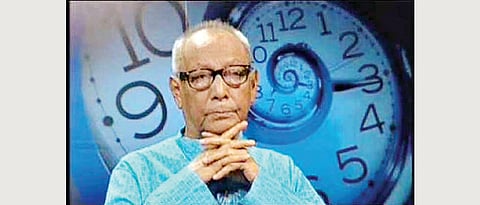

The Collected Works of Homen Borgohain
Author: Translated from Assamese by Pradipta Borgohain
Publisher: Amaryllis
Pages: 390
Price: Rs 599
There is a translation revolution happening in Indian publishing. In the last one decade, we have seen more translations from regional languages into English. This is a welcome change, for there are unsung masterpieces in regional languages that need a wider readership.
However, look closely and you would notice the sly hand of market economy at work here. Take a quick look of the books translated in the last 10 years and you would notice that a large number of them are from select Indian languages, prominently Bengali and Malayalam. Again, you would notice that often, one single author is highlighted. But happily, the trend is changing. Now, we are seeing more translations from hitherto ignored languages like Hindi and Marathi.
The same is the case with Assamese. For years, the only Assamese writer the rest of India recognised was Indira Goswami. It changed a few years ago, when several publishers picked up Arupa Patangia Kalita, another feminist writer of equal importance.
Therefore, the very existence of this book is a cause of celebration. It represents the very best of Assamese literature from an author who has dominated the literary landscape of the state for more than half a century and is still active in the field of journalism.
To be certain, ‘Collected Works’ of the title is misleading. This book represents only a tiny part of Homen Borgohain’s large oeuvre. The book contains 12 short stories and two novellas. Missing are his Sahitya Akademi award-winning novels Pita Putra and Halodhiya Choraiye Baodhan Khai, made into an award-winning film by Jahnu Barua in 1988.
Still, what we have here is a veritable treasure trove, highlighting a picture of Assam never seen before in English, innocent and dangerously manipulative at the same time. Set in a time before the ULFA insurgency movement, the narratives of the book highlight both the idylls and the realities of Assam that was.
The first novella, The Fisherman’s Daughter, a celebrated piece of fiction in Assamese literature, retells the story of Satyavati from the Mahabharata, with a twist, of course, highlighting the prevalent practice of untouchability against the fisherman community and the vicious impact of opium abuse among the poor. By contrast, the second novella, The Merchant’s Son Sets Sail, is a breezy tale of wide-eyed childhood innocent, a la To Kill a Mockingbird.
This contrasting preoccupation of the author, to look at world with wide-eyed innocence and to dive into the very heart of darkness is evident in the short stories included in the book. The Cowherd tells the story of sexual awakening within the sylvan setting of an Assamese village, while Spring in Hell highlights the shimmering angst of 1970s, of a society on the brink of change.
What set this volume apart from other translations from Assamese is its readability and flow. The book benefits from having a translator who is a scholar in English and the author’s son, and it shows. If you want to sample what Assamese literature is like, this is the book to try.
